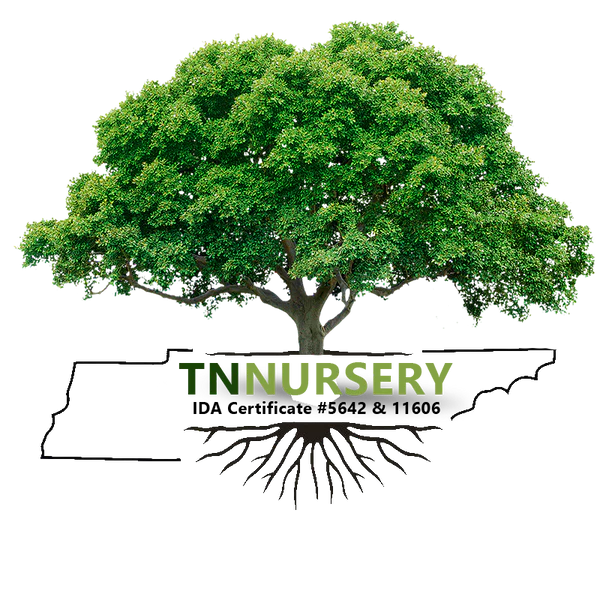The flower garden is often an expression of the garden designer’s personality. Some gardeners plant and design as they go, adding things on impulse and using their creativity to create a unique look. Some gardeners follow pre-planned garden designs, while others hire garden designers. There are many ways to achieve a beautiful garden, but there is great satisfaction in making the design choices, including color.
Color in the garden is so important that it was one of legendary English horticulturalist Gertrude Jekyll’s main focus areas. She coined “drifts of color” to plant long, narrow areas of colorful perennials instead of large blocks. She believed these narrower shapes would attract the eye and lead it along the length of the garden. She also knew such a method would prevent prominent empty spaces once a particular flower was done blooming. Knowing the bloom times of perennials is very helpful in deciding what to plant and where it should go. This knowledge comes with practice and observation, and some gardeners take notes on these details to help them remember and make plans.
But what colors work best? This is a matter of taste. But there are many vibrant color combinations to appeal to everyone. Some incredibly vibrant combinations are surprising, and color combinations someone might not consider trying in clothing or home décor, for example, look fabulous in the garden. Here are some suggestions for color palettes and lists of perennials to try.
Cool Color Palettes
Cool color palettes look lovely in the garden. Cool colors include blue-toned pinks, purples, blues, and whites. These colors can lend a feeling of peace and serenity to the garden, and touches of hot pink (considered both warm and cool) add a pop of brightness.

Blue flowers can enhance the garden from early spring through autumn. The Virginia Bluebell (Mertensia virginica) is a great blue flower to try. These colorful native perennials have delicate nodding bell-shaped flowers of periwinkle blue. They start as pink buds and then unfurl in a new color, making them well-loved spring flowers for their color show for several weeks in mid to late spring. Virginia bluebells multiply quickly in shady spots and look great in a woodland garden.
Another blue-flowering native perennial that lights up the late spring garden are Jacob’s Ladder (Polemonium reptans). The tiny star-shaped flowers range in color from white-edged with pale blue to violet-blue. The flowers last for weeks and produce sweet nectar which is an important food source for pollinators in the spring. They do well in partial sun and prefer somewhat rich, amended soil.
Violets (Viola odorata) are a well-known purple perennial flower that is so common it is often considered a weed. But these delicately scented perennials provide food for spring pollinators and also grow well in spots where not much else will grow. The colors range from white with purple accents to pale lavender, medium rosy, purple, and dark purple. They’re not fussy about soil, grow fine in the shade to partial sun, and spread freely in the landscape. They’re easy to pull up by their roots, so they need not become invasive.
From mid to late spring, bearded irises put on a thrilling show with their many colors. A bed of blooming irises is a gorgeous sight to behold, and the many shades of blue, purple, and pink offer an enormous range of cool colors. Wide reblooming varieties will produce another round of flowers in late summer, mainly in warmer zones. For optimal bloom, irises should be divided every 2-3 years.
Blue vervain is a summer-blooming perennial with flower spikes that grow up to 5 feet tall. The bright purple flowers attract many pollinating insects. These plants like a damp, sunny location and grow very well in swampy or boggy areas in the landscape.
Another great summer-blooming plant that comes in cool shades of blue, purple, and pink is the perennial geranium (Geranium maculatum). These geraniums are different from the annual geraniums grown in pots. They are very hardy and provide masses of bright flowers that gently meander among other plants in the flower bed.
They bloom well in partial shade to full sun.
Don’t forget to add flowering shrubs to your cool garden palette. The ‘Nikko Blue’ hydrangea bears beautiful deep blue clusters of flowers over a long summer blooming season. Rose of Sharon (hibiscus) offers many lovely cool colors, including white, pale pink, rosy pink, lavender, and light blue. The Spirea Japonica provides masses of raspberry-pink flowers for many weeks in mid-summer.
Warm Color Palettes
Warm colors add brightness and heat to the garden. Like cool colors, they can be abundant in the garden from early spring through late autumn, beginning with spring bulbs. The warm colors of yellow, gold, orange, peach, vermilion, and red, and deeper warm colors like brown and burgundy give natural vibrancy to flower beds.
Start with an array of yellow daffodils to wake up the yard in early spring with rich bands of color. Tulips come next in shades of yellow, peach, orange, and red. All tulip varieties have brilliant warm colors, including Emperor tulips, Triumph tulips, Early and Late Double tulips, and Darwin Hybrids.
You can also plant some Celandine Poppy plants (Stylophorum diphyllum). These native woodland ground covers are also known as wood poppy. These low- maintenance plants produce bright yellow flowers in spring and attract early pollinators.
The summer season brings brilliant warm-toned perennials. Perky day lilies spring up next to dormant bulbs in a warm rainbow of yellows, oranges, and reds.

Butterfly weed (Asclepias) is an excellent plant for the garden, blooming for weeks in the summer. It is a crucial food for pollinators, especially butterflies. It spreads well and is not fussy about soil but does like plenty of suns. Another bold color for your warm garden palette is the Red Hot Poker Plant (Kniphofia). These unusual plants have spiky-looking flowers that begin blooming in late spring and carry on blooming through much of the summer. These beautiful perennials get their common name from their color gradation of yellow at the bottom, orange in the middle, and bright red at the top, much like a lit torch or a red-hot metal poker.
Autumn brings changing colors of tree and shrub leaves in brilliant shades of red, orange, and gold, and planning for the timing of these rich colors, you can also accent them with flowering perennials. One shrub with brilliant warm autumn colors is the sumac, which has several cultivars, including the Dwarf sumac (Rhus copallinum), which grows to 3 feet tall, and the spreading ‘Staghorn’ sumac which grows up to 10 feet tall. These hardy deciduous shrubs produce brilliant shades of red, orange, and scarlet leaves in the fall, and both can be trimmed into a tree form.
Mixing Warm and Cool Colors
One great approach to dramatic color in the garden is to mix warm and cool colors in one palette. This is especially effective when you mix opposites, like oranges with deep blues, on the color wheel. Imagine orange butterfly weed alongside bright blue vervain. Purples and yellows also look amazing, whether using pastels or
brights, or a range of both. Try tall purple phlox behind cheery yellow daylilies. Shades of red or pink with different shades of green also look bold and beautiful in the garden: try hot pink and burgundy with chartreuse or pale pink with silvery green foliage.
When creating color combinations, one often sees certain classic combinations, such as blue and white or red and yellow. But don’t be afraid to use unorthodox combinations, like pink and red, pink and orange, red and purple, or white and yellow. You’re only limited by your creativity and your willingness to experiment.


